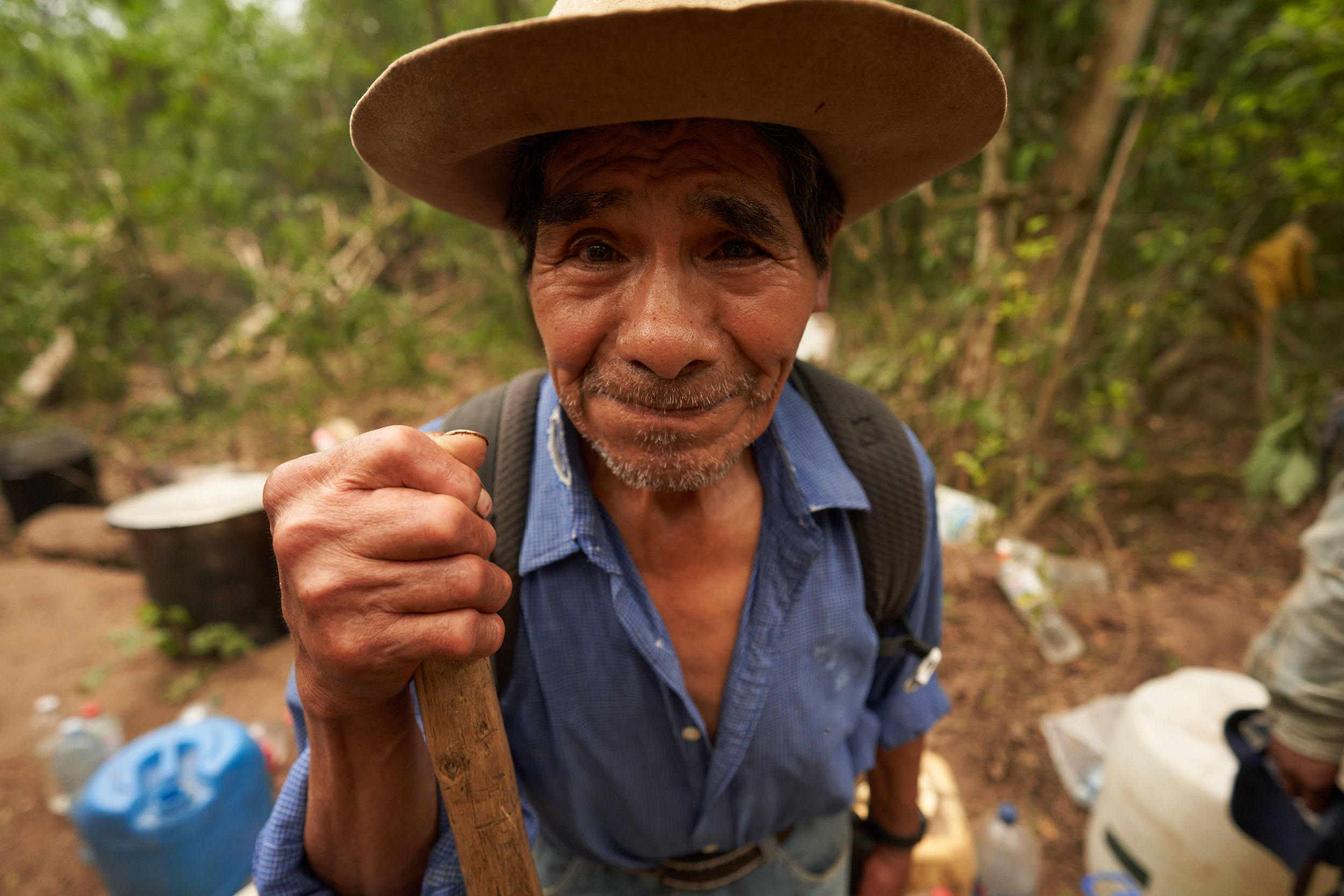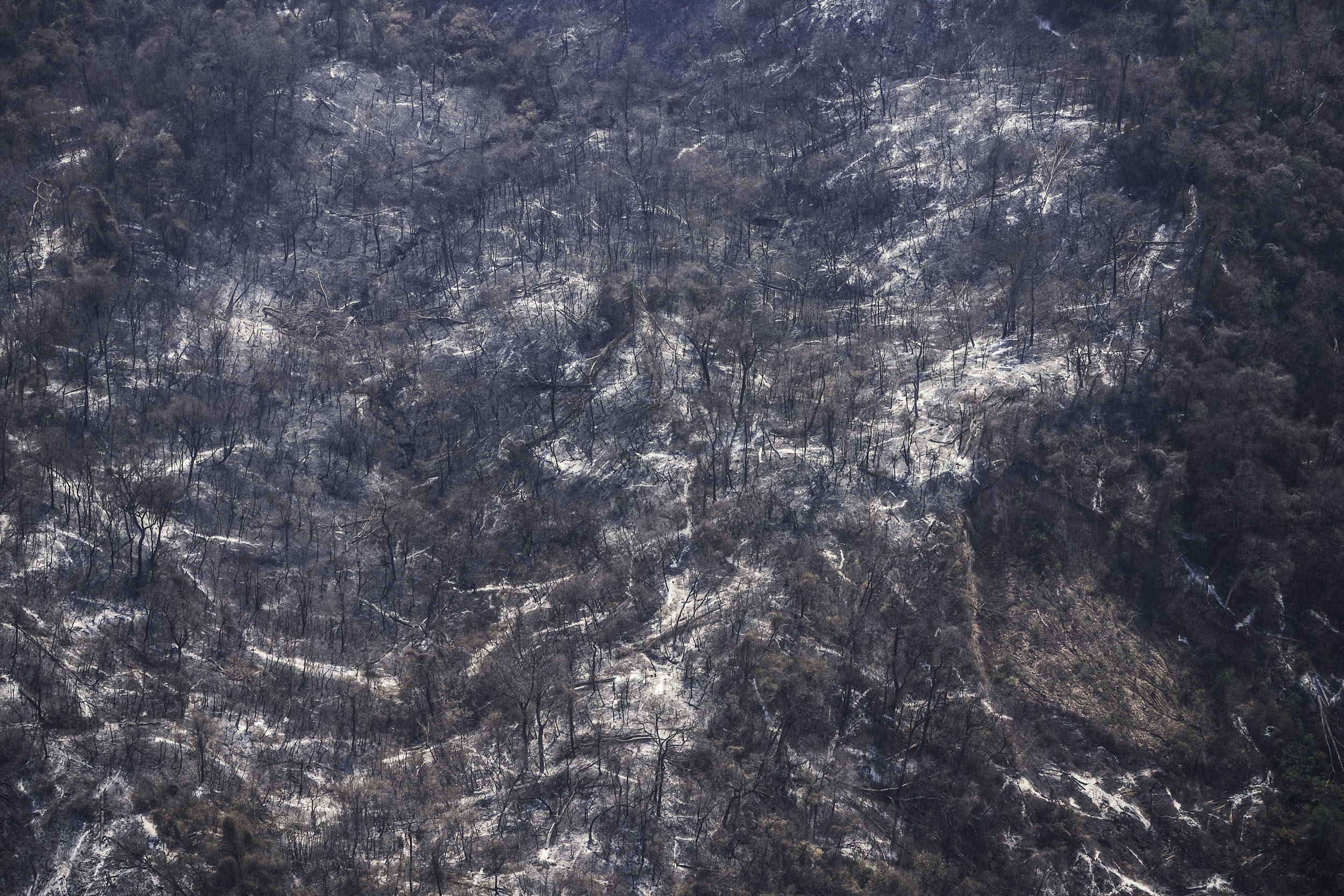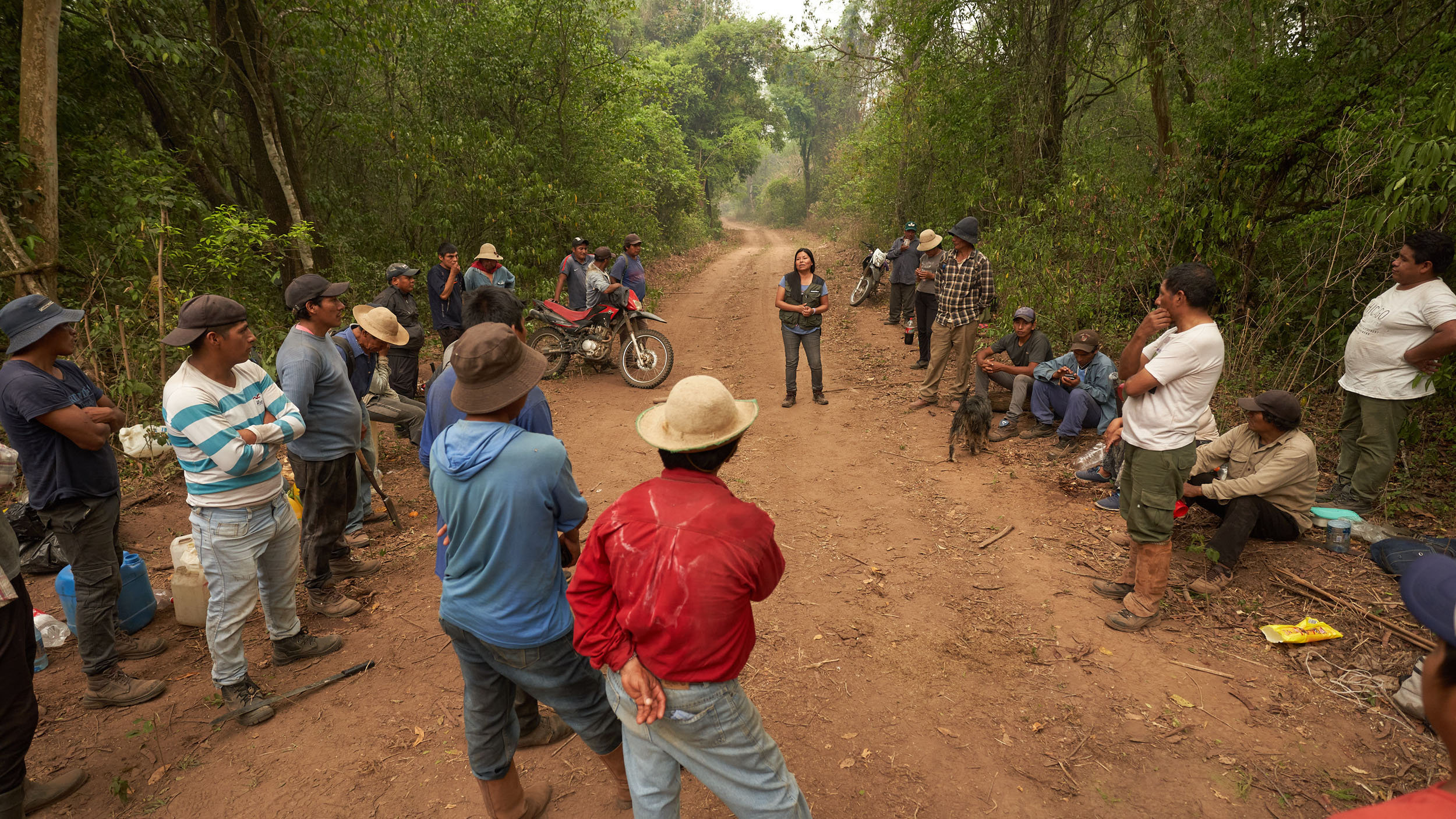- Fires affected some 1.8 million hectares in Argentina in 2022.
- Many of the country’s 2022 fires occurred in the country’s northern Chaco region and were largely caused by industrial agriculture coupled with drought conditions, according to Indigenous residents and researchers.
- The arid Gran Chaco is the second-largest forest in South America after the Amazon, and extends across 110 million hectares and portions of four countries—Argentina, Brazil, Paraguay and Bolivia
- Experts said deforestation of Argentina’s Chaco is affecting Indigenous communities’ access to resources.
“We couldn’t see the sun for a whole month because of the clouds of smoke. For an entire month, between October and November (2022), we didn’t see the sun,” said David Sarapura, from the Indigenous Kolla Tinkunaku community in Argentina.
“It was awful,” Sarapura said, “the older people told us that fires like this had never happened before. Even airtanker planes couldn’t be used to fight the fire because there was no visibility.”
A similar situation occurred in General José de San Martín, another of the departments located in the province of Salta, near Orán.

Satellite data from the Global Forest Watch (GFW) monitoring platform began registering deforestation alerts associated with fires on Oct. 1, 2022. According to a report by Greenpeace Argentina, which includes data from the National Fire Management Service (SNMF), forest fires affected around 95,000 hectares of forests in Salta province in 2022. Nationwide, fires affected some 1.8 million hectares.
In mid-December, rainfall slowed the spread of the fire, although it still burned in some places. By the beginning of 2023, there were still some areas with fire, but very few, Sarapura said.
“Last year, Salta had a significant number of fires. It is a growing problem and one that has persisted over the last three years thanks to drought,” said Hernán Giardini, Coordinator of Greenpeace Argentina’s Forests and Climate Change campaigns.

Giardini says it is unusual for a large number of areas to catch fire in Salta. This is especially true for the Yungas forest, a mountainous area.
Giardini said Argentina has been experiencing a severe drought, which caused “many outbreaks of fire to spread.”
Since 2019, much of Argentina has been experiencing droughts, with 2022 12.8% drier than average and ranking among the 14 driest years since 1961, according to a report from Argentina’s National Meteorological Service.
Another report published by the meteorological service in February 2023 suggests that extreme temperatures at the beginning of the month were mainly concentrated in Patagonia, but from Feb. 6, heat moved from south to north.
Giardini said that 95% of Argentina’s forest fires are caused by humans, explaining that some are intentional, while others are accidental or caused by negligence.
“When I say accidental, I mean everything from a poorly extinguished barbecue or cigarette butt through to burning pasture for regrowth, a practice that in times of drought can lead to fire spreading easily,” Giardini said. “Areas are burned after a clearing, or are burned just to avoid having to secure a deforestation permit.”
The other 5% of the fires, Giardini continued, are caused by lightning storms that strike the middle of the forest and ignite a fire that spreads easily in the dry season.
“It also happens sometimes in areas that are difficult for the fire service to access, and it gets more challenging in the mountains,” Giardini said.
But Giardini cautioned that it’s not always possible to determine the cause of a fire.
“We were on the ground with communities helping them to fight the spread of the fire, the causes of which are not yet known,” Giardini said.

“If you ask the older people, our grandparents, they will tell you that climate change has occurred dramatically in a short space of time. This includes a lack of water, the disappearance of some species, and the movement of wild animals from one place to another,” Sarapura said. He added that until recently, jaguars would never have been seen in areas above 2,500 meters of altitude; but, over the last few years, due to with fire activity, they have been spotted at 3,000 meters.
Sarapura, a member of the Indigenous Kolla Tinkunaku community, said that many species of wildlife fled because of the fire, but others were burned to death.

“We have jaguars (Panthera onca), tapirs (Tapirus terrestris), brocket deer (Mazama gouazoubira), black squirrel monkeys (Saimiri vanzolinii). There are a lot of animals, because this region is one of the most populated with wildlife in the whole of Argentina,” Sarapura said.
“Without their natural habitat they had to migrate to other areas in order to survive,” he added. “Let’s hope that this year is not as dry, because if it happens again it will wipe out the entire forest. For the time being, some trees have been left standing.”
Ana Álvarez, President of the Chaco Argentina Agroforestry Network, explained a large, forest-dependant Indigenous population inhabits Formosa, Chaco and Salta—three provinces in the Argentine Chaco region.
Álvarez said deforestation in Salta province is affecting Indigenous communities’ access to resources, and is being driven by industrial agriculture.

Álvarez explained that the region’s agriculture boom began in the 1970s and intensified at the beginning of the 21st century as soy and other commodity crops prospered due to temporary increases in rainfall. .
“It was then that the entire region first opened up to crops, mainly soy, but also beans, corn and sugarcane,” Álvarez said.
But the aridity the Chaco is known for eventually returned. Álvarez said that in order to stay profitable, many crop growers became cattle ranchers and expanded pastureland by clearing forests.
The Gran Chaco is the second-largest forest in South America after the Amazon, and extends across 110 million hectares and portions of four countries—Argentina, Brazil, Paraguay and Bolivia. The ecoregion is home to some 3,400 plant species, 500 bird species, 150 mammal species and 220 reptile and 100 amphibian species.

Argentina’s Forest Law was passed in 2007 after a petition spearheaded by civil society garnered 1.5 million signatures, putting pressure on the National Congress to act. Through this law, which requires all provinces to implement Territorial Planning of Native Forests (known by its Spanish-language acronym, OTBN), deforestation was prohibited in almost 80% of forested areas. However, some land-use plans, such as those affecting Salta and Chaco provinces, were modified by their provincial governments, leading to a reduction in areas where clearing is prohibited. The law also ordered that the OTBN be updated every five years, but not all provinces have complied with this.
“Since the Forest Law was enacted, some 400,000 hectares of forest have been lost in the Chaco province —close to half a million. If we zoom out and talk about the entire Gran Chaco, in the 13 years from 2004 to 2017, seven million hectares were lost. This figure includes Paraguay and Bolivia, but a large part of these seven million hectares is in Argentina,” said Italian physicist Ricardo Tiddi, a member of the citizens’ platform Somos Monte.
“There has been so much clearing in Argentina that there are almost no wildlife corridors left for animals to move between the Argentine Gran Chaco and the rest of the Gran Chaco in other countries,” Tiddi said.
Lecko Audencio Zamora, Indigenous peoples’ rights activist and member of the Wichi people, lamented the spread of soy in the region.
“They have always preached that [soy cultivation] brings health and progress,” Zamora said, “but in reality, for Indigenous peoples, it has brought the opposite; land evictions, more poverty, more hunger and less health.”
This is a translated and updated version of a story that was first reported by Mongabay’s Latam team and published here on our Latam site on March 9, 2023
Banner image: A community member from Orán grieves over the devastation caused by forest fires. Image courtesy of Greenpeace.
Feedback: Use this form to send a message to the editor of this post. If you want to post a public comment, you can do that at the bottom of the page.
